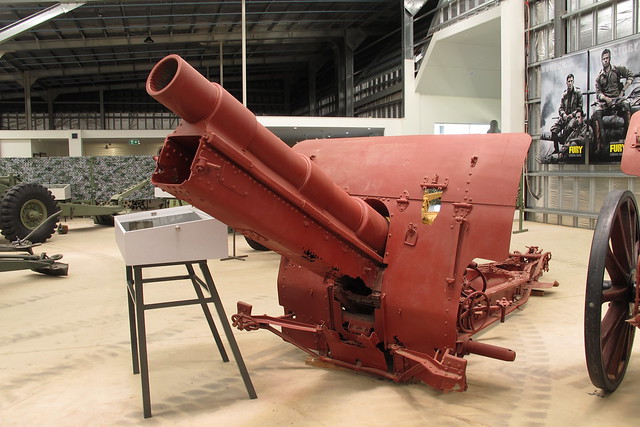
When we were kids, I’m sure you’ll remember climbing all over the old cannons in the park. Of course, as children, it’s hard to imagine the horror these weapons inflicted on the enemy.
In fact, it was artillery that caused the greatest number of casualties on both sides during the protracted trench warfare that typified The Great War between 1914 and 1918. The Western Front in France was well known for the horrendous artillery duels that took place between opposing sides, especially during such bloodthirsty campaigns as The Somme in 1916.
It is reckoned that the Germans fired more than 200 million artillery shells during the course of the war accounting for the majority of the five million casualties they inflicted on Britain (and the Commonwealth), France, Russia and Italy. Australia, Canada and India each lost about 60,000 men each, while Britain lost nearly 800,000.
In fact, it was artillery that caused the greatest number of casualties on both sides during the protracted trench warfare that typified The Great War between 1914 and 1918. The Western Front in France was well known for the horrendous artillery duels that took place between opposing sides, especially during such bloodthirsty campaigns as The Somme in 1916.
| Just some of the shells fired by the British on the first day of the Battle of the Somme July 1916 |
It is reckoned that the Germans fired more than 200 million artillery shells during the course of the war accounting for the majority of the five million casualties they inflicted on Britain (and the Commonwealth), France, Russia and Italy. Australia, Canada and India each lost about 60,000 men each, while Britain lost nearly 800,000.

Towards the end of the war, a great many guns were captured by our forces, mainly in France. These guns and many other smaller field weapons like mortars and heavy machine guns were shipped back to places like Britain, Canada and Australia to be installed as ‘trophies’ in municipal parks and memorial gardens.
Each state in Australia formed a committee to oversee the distribution of weapons captured by our AIF troops during the war. Each district received weapons commensurate with the number of men sent for service. This is why you may see smaller weapons in country towns and bigger guns in the cities. There was frequently debate between the various councils and the committee about the allocation, usually because the weapon allocated was not seen to befit the district.
This practice was a bit controversial at the time and many of the weapons installed in Britain were vandalised by veterans who saw them as insensitive reminders of the terror they endured during their time in France. I am unaware if this practice was carried out by returned soldiers in Australia, but it wouldn’t surprise me. (EDIT: Redfern NSW refused their gun and it was later vandalised)
 |
| Cronulla Park's First World War Field Gun was 'recalled' in 1942 and likely melted down. Picture: Local History Collection, Sutherland Shire Libraries |
It is also known that a great many guns were recalled by the army during WWII and likely ended up in the Port Kembla furnaces like the one that once adorned Cronulla Park.
"A military order has indicated that all field guns and howitzers of German manufacturer and origin, of calibres 77mm, 4.2 inch or 5.9 inch, and all anti-aircraft guns, no matter what calibre, must be delivered to the Deputy Assistant Director of Ordnance Stores, Liverpool Camp by March 14." (1942)
I know that there were others later sent for scrap when they started to get rusty and weatherbeaten. Others were sold to private collectors or salvaged from dumps. Fortunately, other councils recognised their significance and stood true to their promise to maintain them and had them restored.
I know that there were others later sent for scrap when they started to get rusty and weatherbeaten. Others were sold to private collectors or salvaged from dumps. Fortunately, other councils recognised their significance and stood true to their promise to maintain them and had them restored.
 |
| This German field gun was recovered from a scrap heap and now resides in a private collection in Cairns. |
If you have photos of your local memorial, I would love to feature them in the Flickr album I have created for this purpose.
https://www.flickr.com/groups/ww1trophies/pool/
All material (c) Copyright Traveloscopy.com unless noted otherwise.
All material (c) Copyright Traveloscopy.com unless noted otherwise.






No comments:
Post a Comment